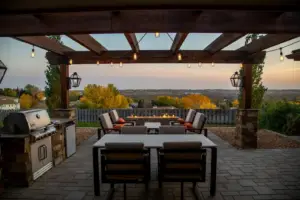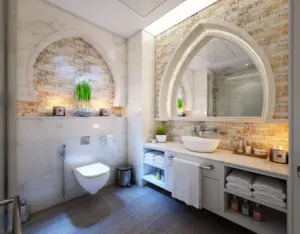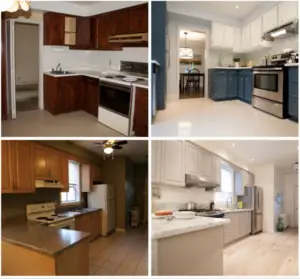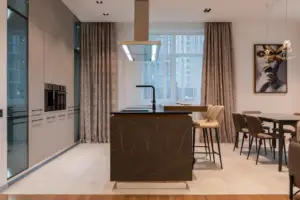By George House/23,Oct,2025
The color palette you select to use in your home interiors determines the whole mood of your place. The appropriate mix of colors can make rooms either comfortable, lively, or calm. Colors affect the feelings of people and even their behavior.
According to studies conducted by the National Institute of Health (NIH), the color tones have the ability to influence mood and stress levels significantly. It is not surprising, therefore, that most homeowners take time to determine the colors and finishes to be used on the walls.
You may be a fan of bold colors or a follower of peaceful colors; the balance between the walls, furniture, and decoration is what makes your style. This article will tell you everything to know about choosing color palette for your home interiors.
The Role of Color in Interior Design
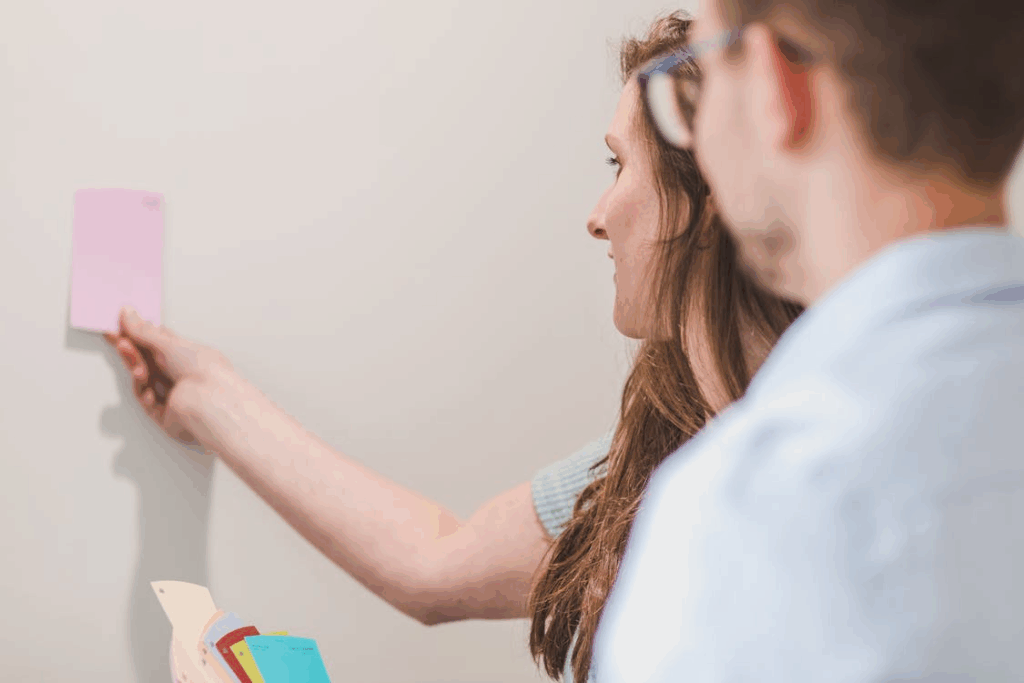
(Source)
You should consider the use of your rooms before deciding on your color scheme. A bedroom can be a room that requires softer sounds, whereas a living room can be a room that can use brighter colors. It is there that the knowledge of interior design color trends and visual balance is needed.
The Psychology of Colors
Colors influence mood, comfort, and energy. For instance, red is an exciting color, blue is a relaxing color, and green is a calming color. That is why bedrooms are commonly painted in greens and blues, whereas kitchens are painted in yellows or warm neutrals. Harmony in your color palette when it comes to interior decoration of your home is a matter of mixing emotion and purpose.
The Importance of Lighting
Lighting affects the appearance of colors. The natural light brings out the real colors, and the artificial light can either bring warm and cool color tones. LED lighting has the ability to change the perceived brightness significantly, and this affects the appearance of wall colors at various times of the day. Always subject paint samples to different lighting conditions.
Integrating Function and Aesthetics
A harmonious house plan depicts beauty and intent. The tones that you use must be appropriate to the activity of the space and furniture. Form and function are two concepts that should be kept in mind when matching interior design color trends with your decor. It is not about following the trends but rather discovering what really suits your lifestyle.
Selecting the Appropriate Color Scheme of Every Room
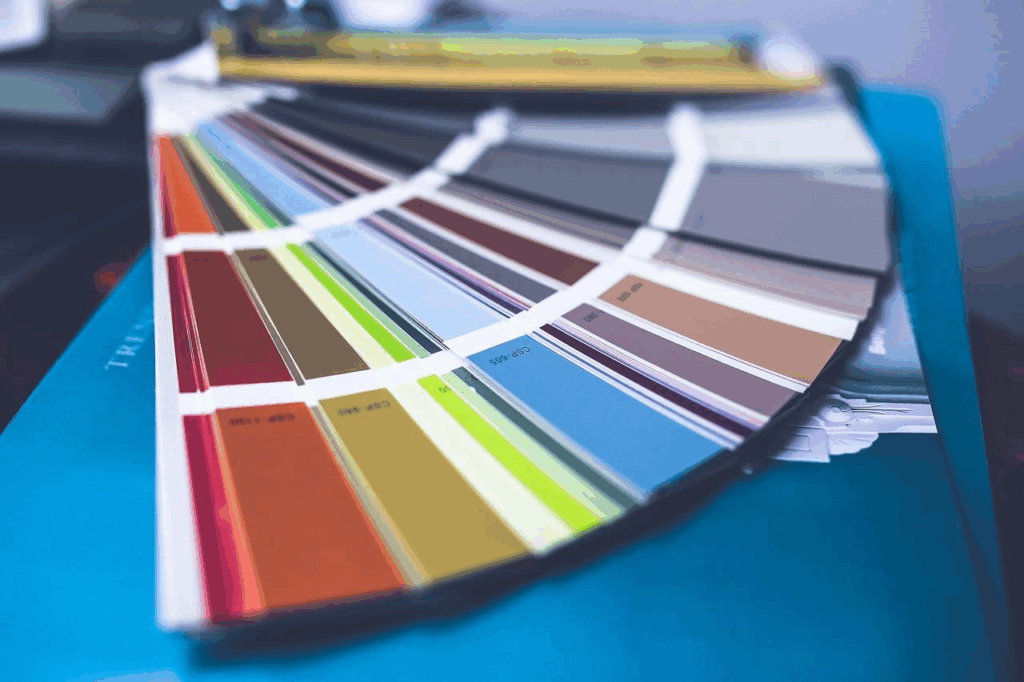
(Source)
The color scheme of your home interiors can never be arbitrary. The rooms have their purpose and the color of the room must be in line with the purpose. Bedrooms can be required to be serene, whereas social spaces are best served with welcoming colors. Kitchens and bathrooms have clean and fresh finishes which are easy to maintain.
Color Combinations in Living Room
The social center is the living room. This is why the choice of wall colors to use in the design of the living room is important. Neutral colors such as beige, sand, or taupe are comfortable, whereas dark greens and blues are classy.
Bedroom Color Selection
Bedrooms should offer calm. Light blues, lavenders, and soft greys work to ease tension. Together with soft lighting, they cultivate a deeply tranquil atmosphere. In order to maintain the same color trends in your interior design, apply the same undertones in furniture and bedding.
Kitchen and Dining Room Selections
Kitchens are vibrant with vibrant colors such as yellows or sage greens. Restaurants are better suited to warmer colors that encourage comfort and hunger. The Center of Design Research found out that warm colors enhance food pleasure and communication at the table. That connection should be transferred through these common spaces in your color palette of your home interiors.
Locating a Balance Between Walls, Floors and Furniture
It is the way all surfaces relate that makes the interiors truly beautiful. The best solution is to apply the 60-30-10 rule: 60 percent of the dominant wall color, 30 percent of secondary tones, and 10 percent of accents. This will make your good paint colors in the modern houses to be consistent and allow room to be creative in accessories and finishes.
Walls: The Palette Building Block
Walls act as your canvas. The neutral colors, beige, white, or greige, allow changing the furniture style in the future. Bold accent walls are also back in fashion to those who follow the trends of interior design colors. According to the National Association of Home Builders , 42 percent of homeowners would like to use accent walls to emphasize open spaces.
Floors: The Grounding Element
Flooring finishes affect room warmth and feel. Most best paint colors in modern houses are mixed with wooden floors of medium tones. Light floors would make the spaces look 25% bigger, whereas darker ones would add depth and sophistication. The trick is to have the undertones of floors and walls matched so that there is a smooth transition.
Furniture: The Unifying Feature
Everything comes together with furniture.Select mixed media pieces of wood, metal, or upholstery to complement your color palette, not compete with it. You can create a balanced space by choosing furniture colors that echo the tones of your walls. The harmony of the walls, floors, and the decor when matched in the right way produces a visual unity.
Playing with Textures, Patterns and Finishes
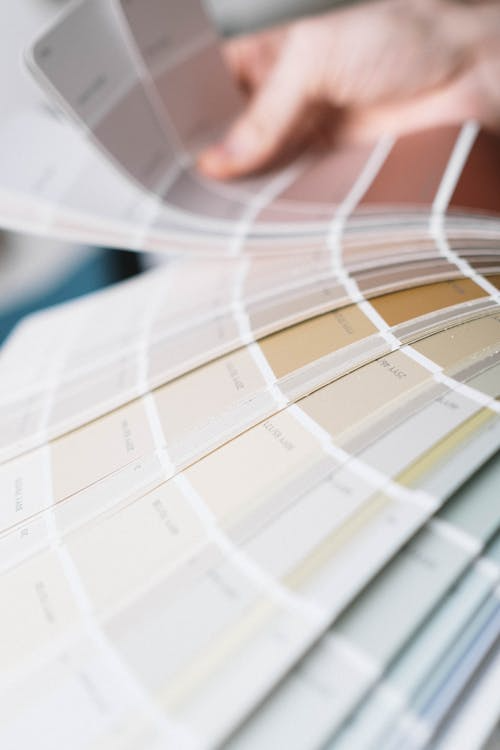
(Source)
Once you have chosen your primary colors and textures make your interiors come to life. Glossy surfaces are smooth and light is reflected differently compared to matte finishes. A combination of these produces visual depth. Simple designs too are good with variation. . Here is what you should know.
Textures that Transform
The texture modifies the feel of colors. Glossy surfaces reflect light whereas rough surfaces absorb it. Add layer materials such as linen, wood, or stone to make your neutral color schemes for interiors inviting.
Patterns and Prints
Patterns bring personality. They are floral, geometric, or abstract and make the eye catchy and attractive. To maintain the balance, apply patterns in smaller sizes such as cushions or curtains. Pattern can also be added to the design through accent walls without overpowering the design. The correct combination will revive your ideas of accent wall at home.
Character Defining Finishes
Matte paints are contemporary and glossy finishes are luxurious. Visual movement can be achieved by combining the two. Furniture finishes are lacquered, brushed or rustic and give personality. These can be matched to your preferred accent wall ideas in the home to make the design complete.
Conclusion
Building your color palette for your home interiors means blending emotion, function, and harmony. Every tone shapes how your space feels. With the right mix of light, color, and finish, your home reflects both comfort and character.
George Group transforms your design vision into reality with expert color coordination and flawless finishes for every room.

